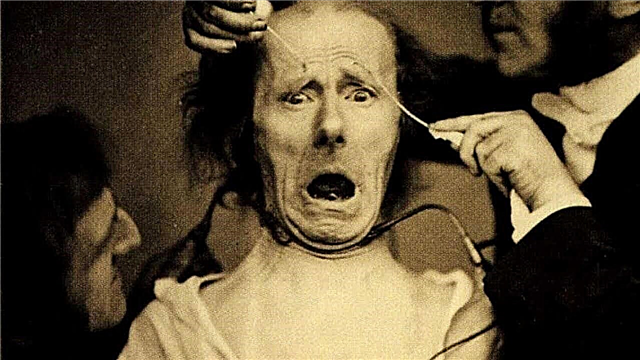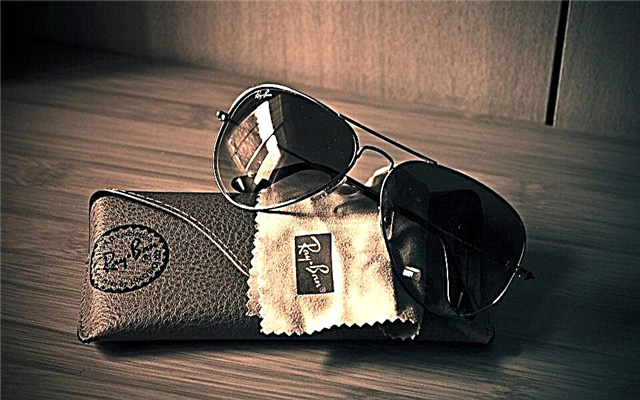Every lover knows how important it is to prepare an iron horse for the summer season after a long winter. However, not everyone knows that a damp cloth and grease are not enough for this. It requires dexterity, a thorough approach and a little trick.
Egor Berkut, Thule brand expert, tells how to get a bike back in shape without contacting professionals:
“Before embarking on a rescue operation, remember or photograph the location and fastening of all parts, in case you have to remove them. Although this advice seems obvious, many neglect it and end up surrounded by "extra" spare parts. And after a careful study of the bicycle, you can safely begin work. ”
Wash off all unnecessary
 The layer of dust and dried grease that has accumulated on the bike during downtime is at least not presentable. In addition, behind it you can not notice cracks, scuffs and other problems that sometimes turn out to be more serious than it seems. Therefore, first of all, you need to wash the bike.
The layer of dust and dried grease that has accumulated on the bike during downtime is at least not presentable. In addition, behind it you can not notice cracks, scuffs and other problems that sometimes turn out to be more serious than it seems. Therefore, first of all, you need to wash the bike.
At the same time, a high pressure washer will not work: there is a possibility that under the pressure of water the dirt will scratch the paint, and a strong jet will lead to deformation of small parts. It is better to use a garden hose or a regular bucket of warm water and a sponge. In any case, try to avoid getting liquid in the carriage and bushings, so as not to wash the grease out of them.
Handle chain
 To begin with, check the condition of the chain: if it has lengthened over time, if there are any knocked out or strongly sharpened teeth. If such problems are discovered, the bike will meet with the master, and the chain is most likely a replacement. If everything is in order, treat the chain with a brush (an old toothbrush is also suitable) and a degreaser. Wait for the product to work and dry. After that, you can apply grease, and preferably on the inside for greater efficiency. Instead of the usual machine grease, it is better to take a special one based on silicone - it repels dust and dirt well.
To begin with, check the condition of the chain: if it has lengthened over time, if there are any knocked out or strongly sharpened teeth. If such problems are discovered, the bike will meet with the master, and the chain is most likely a replacement. If everything is in order, treat the chain with a brush (an old toothbrush is also suitable) and a degreaser. Wait for the product to work and dry. After that, you can apply grease, and preferably on the inside for greater efficiency. Instead of the usual machine grease, it is better to take a special one based on silicone - it repels dust and dirt well.
Do not forget about the cassette and stars
 Cassette and stars also need cleaning. Moreover, if a circuit malfunction is detected, you should not immediately go to the store for a new one. The chain links wear together with the teeth of the cartridge, which means that they must be changed together, otherwise the chain may not “sit” on the cartridge. The same applies to stars: they usually last longer, but checking the symmetry of the teeth does not hurt.
Cassette and stars also need cleaning. Moreover, if a circuit malfunction is detected, you should not immediately go to the store for a new one. The chain links wear together with the teeth of the cartridge, which means that they must be changed together, otherwise the chain may not “sit” on the cartridge. The same applies to stars: they usually last longer, but checking the symmetry of the teeth does not hurt.
Knitting needles
 A great way to check the correct fixation of the spokes is to sort them out like guitar strings. All knitting needles should produce the same sound, loud and clear. If too low frequencies are heard, the needle must be tightened; if too high - loosen. And make sure that the wheel does not take the shape of the “eight” that appears when the spokes are unevenly tensioned.
A great way to check the correct fixation of the spokes is to sort them out like guitar strings. All knitting needles should produce the same sound, loud and clear. If too low frequencies are heard, the needle must be tightened; if too high - loosen. And make sure that the wheel does not take the shape of the “eight” that appears when the spokes are unevenly tensioned.
Check tires
 Since it came to wheels, immediately evaluate the condition of the tires. If a network of small cracks is found, it makes sense to replace tires, because they still can not hold pressure. Speaking of pressure. The wheels will likely have to be pumped up. However, first you can still check the pressure using a bicycle pump with a pressure gauge or an automobile compressor. However, without tools it is quite possible to do. Just sit on the bike and see how much tires are sagging: if less than 1 centimeter, you can ride, if more - you need to pump up.
Since it came to wheels, immediately evaluate the condition of the tires. If a network of small cracks is found, it makes sense to replace tires, because they still can not hold pressure. Speaking of pressure. The wheels will likely have to be pumped up. However, first you can still check the pressure using a bicycle pump with a pressure gauge or an automobile compressor. However, without tools it is quite possible to do. Just sit on the bike and see how much tires are sagging: if less than 1 centimeter, you can ride, if more - you need to pump up.
Soften rubber
During the winter, the tires must have become stubborn, so the final touch in working with wheels is the return of softness to the tires. An ordinary lemon will help to cope with this task. You need to take a half, wrap it with a rag, squeeze out the juice and wipe the tires with a damp cloth. This trick will increase tire grip.
Take care of safety
 A separate point of preparing the bike for the new season is the inspection of the brakes. With mechanical, everything is quite simple: any damage is in sight. The main thing is to check that the brakes do not wedge, because most likely the cables will sag during the winter and, therefore, they will need to be tightened. With hydraulics, things are a little more complicated. Leakage of brake fluid often leads to braking problems. So, we recommend that you carefully inspect the pads and disc. In addition, air could get into the mechanism, and brake fluid, especially when storing the bicycle in a damp room, could absorb moisture. To identify problems, press the brake levers and look at the “reaction” of the brakes. If problems are still identified, pumping the system will help solve them.
A separate point of preparing the bike for the new season is the inspection of the brakes. With mechanical, everything is quite simple: any damage is in sight. The main thing is to check that the brakes do not wedge, because most likely the cables will sag during the winter and, therefore, they will need to be tightened. With hydraulics, things are a little more complicated. Leakage of brake fluid often leads to braking problems. So, we recommend that you carefully inspect the pads and disc. In addition, air could get into the mechanism, and brake fluid, especially when storing the bicycle in a damp room, could absorb moisture. To identify problems, press the brake levers and look at the “reaction” of the brakes. If problems are still identified, pumping the system will help solve them.
Inspect the entire system
Important parts of the brake system are cables and pads. The cables should be well tensioned, not distorted by tears and rust. It is also worth additionally applying liquid lubricant to them so that the brakes and switches work more clearly. As for the pads, on disc brakes, their thickness should be more than 1 millimeter, and on rim indicators of wear is the erasure of the grooves. In case of detection of such defects, one way out - replacement.
Prepare seat
 It is time to take care of comfort. If you have a leather seat, it, like the rubber on the tires, probably hardened during the winter. You can restore the saddle to its former softness by spreading it with a special skin care product. Just do not overdo it, otherwise the material will lose some wear resistance.
It is time to take care of comfort. If you have a leather seat, it, like the rubber on the tires, probably hardened during the winter. You can restore the saddle to its former softness by spreading it with a special skin care product. Just do not overdo it, otherwise the material will lose some wear resistance.
Tighten all screws
 To carry out the decisive test, lift the bike and swing it from side to side. At the same time, the parts should not hang out and make any extraneous sounds. Typically, such violations indicate that it is necessary to tighten the bolts that have moved in. At risk are the steering wheel, steering column, speed and brake switches, as well as the saddle and seatpost clamp. However, a problem may occur with other parts of the bike.
To carry out the decisive test, lift the bike and swing it from side to side. At the same time, the parts should not hang out and make any extraneous sounds. Typically, such violations indicate that it is necessary to tighten the bolts that have moved in. At risk are the steering wheel, steering column, speed and brake switches, as well as the saddle and seatpost clamp. However, a problem may occur with other parts of the bike.
Finally, I would like to recall that any problem is easier to prevent than to solve. Therefore, closing the season, try to provide your bike with everything you need for a comfortable winter. In a warm, dry room, protected by a protective cover, it will feel much better and will bring much less trouble with the beginning of summer.












